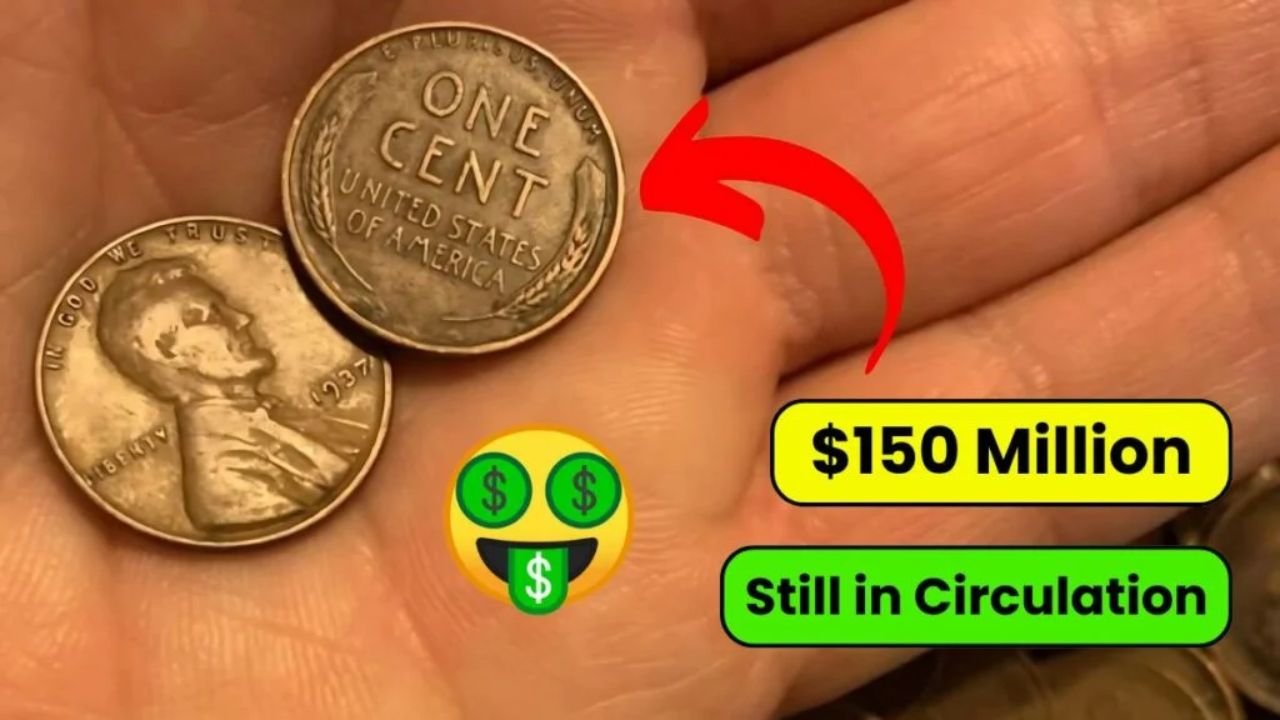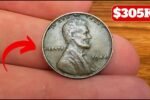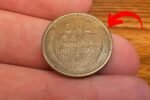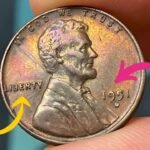Lincoln Wheat Penny: Have you ever noticed an old penny with Abraham Lincoln on the front and two wheat stalks on the back? It may seem like just another coin, but that simple piece of copper could be worth thousands—or even hundreds of thousands—of dollars. Known as the Lincoln Wheat Penny, this coin is quietly turning everyday collectors into millionaires.
Many of us toss spare pennies into jars, ignore them in our car’s cup holder, or drop them in a donation box without a second thought. But if you take a closer look, one of those humble coins could be a rare gem. The Lincoln Wheat Penny, particularly those with rare minting errors or unique dates, are among the most valuable coins circulating in America.
Let’s explore what makes these pennies so special, which ones are worth the most money, and how you can determine if you’re holding a small fortune in your pocket.
What Is a Lincoln Wheat Penny?
The Lincoln Wheat Penny was first minted in 1909 to celebrate Abraham Lincoln’s 100th birthday. It was the first U.S. coin to feature a president’s portrait. On the obverse (front), you’ll find Lincoln’s profile, while the reverse (back) shows two wheat stalks surrounding the phrases “ONE CENT” and “UNITED STATES OF AMERICA.”
This iconic design was produced from 1909 to 1958. After that, the reverse design was changed to show the Lincoln Memorial. If you find a penny dated between those years with the wheat design, you’ve got a Wheat Penny—and some of them are worth serious money.
Why Are Lincoln Wheat Pennies Valuable?
Most Lincoln Wheat Pennies are only slightly more valuable than their face value. However, certain characteristics can make them highly desirable to collectors, including: Lincoln Wheat Penny
- Low Mintage Years – Some years saw fewer coins produced, making them rare.
- Mint Errors – Mistakes such as double dies, off-center strikes, or missing mint marks.
- High-Grade Condition – A penny that’s well-preserved and uncirculated is worth much more.
- Metal Composition – A few pennies were made using the wrong metal blanks, which can dramatically increase their value.
Because of these features, some Lincoln Wheat Pennies have sold for thousands—or even over a million—dollars.
The 1943 Copper Lincoln Wheat Penny: A Hidden Millionaire Maker
One of the most famous and valuable Lincoln Wheat Pennies is the 1943 Copper Penny. During World War II, the U.S. Mint switched from copper to steel for pennies to save copper for war supplies. As a result, almost all 1943 pennies were made of steel and appear silver.
However, a few copper blanks from 1942 were mistakenly used in 1943. These rare copper pennies are incredibly valuable—one sold for over $1 million at auction. Another example went for nearly $250,000. The rarity, combined with a remarkable error, makes this coin the crown jewel of Lincoln Wheat Pennies.
Other Rare and Valuable Lincoln Wheat Pennies
While the 1943 copper penny is the headline-grabber, several other Wheat Pennies are also highly collectible:
- 1909-S VDB – The first Lincoln penny with the initials of designer Victor David Brenner (VDB) minted in San Francisco. Only about 484,000 were made. Value: $1,000–$5,000+
- 1914-D – A rare Denver mint penny, hard to find in high grades. Value: $200–$3,000+
- 1922 No D – A Denver penny with a missing mint mark due to a minting error. Value: $500–$10,000+
- 1955 Double Die – Famous for its doubled date and lettering. Easily identifiable. Value: $1,000–$15,000 depending on condition
These pennies, especially in great condition, are highly sought after and can fetch impressive prices.
How to Check Your Change for a Valuable Lincoln Wheat Penny
Think you might have a treasure hiding in your spare change? Here’s how to inspect your pennies:
- Check the Year – Look for key years like 1909, 1914, 1922, 1943, and 1955.
- Look for Mint Marks – Located below the year; “D” for Denver, “S” for San Francisco, no letter for Philadelphia.
- Use a Magnet – A steel 1943 penny will stick; a copper one won’t—and that could mean you’ve struck gold!
- Inspect for Errors – Look for doubling in the date or lettering, or missing marks.
- Assess the Condition – Coins with sharp details and no scratches are worth more.
If something seems unusual, have the penny professionally appraised. Local coin shops or professional grading services like PCGS can help determine value.
Why Coin Collecting—Especially Lincoln Wheat Pennies—is Booming
In recent years, coin collecting has made a major comeback. Stories of people discovering six-figure coins in forgotten drawers or change jars have sparked widespread interest. For many, it’s not just about money—it’s about history.
The Lincoln Wheat Penny is a perfect example. Each coin is a miniature time capsule, telling stories from the early 20th century through the Great Depression, World War II, and post-war America. Collecting these coins is both a hobby and a form of preserving history.
Final Thoughts: Don’t Ignore That Penny
Before you toss your next penny aside, take a moment to look closely. That Lincoln Wheat Penny could be more than just pocket change—it might be a hidden gem worth thousands. Whether you’re a serious collector or just curious, checking your coins could uncover unexpected riches.
So, go through that old coin jar, inspect the pennies in your wallet, and keep your eyes open. The next big treasure might be sitting quietly in your hand.
Some Important Link
| Telegram Group | Click Here |
| WhatsApp Group | Click Here |
| Home Page | Click Here |















